Age of Conan: Hyborian Adventures Q&A - Single-player, character classes, combat, magic
Director Gaute Godager tells us how and who you will get to play in this online role-playing game based on Robert E. Howard's legendary barbarian.
With more than seven decades of popularity behind him, Conan the barbarian is one of the most enduring characters in all of fantasy. Created by author Robert E. Howard, Conan has gone on to appear in novels, comic books, and, of course, movies that starred a future governor of California. Now Funcom, the developer and publisher of Anarchy Online, is working on creating an online role-playing game that's based in Hyboria, the fictional universe that's home to Conan and all his adventures. Age of Conan: Hyborian Adventures won't be a typical online RPG, though. Funcom touts Age of Conan as an "online action RPG" that combines single-player gameplay with a "massive and brutal multiplayer endgame." In other words, the game starts as a single-player adventure, and after you're finished with the story, you can bring your character into the online universe to adventure with other players from around the world. To learn more, we caught up with Gaute Godager, director of the game, who filled us in on its details. Age of Conan is expected to launch in the second quarter of 2006.
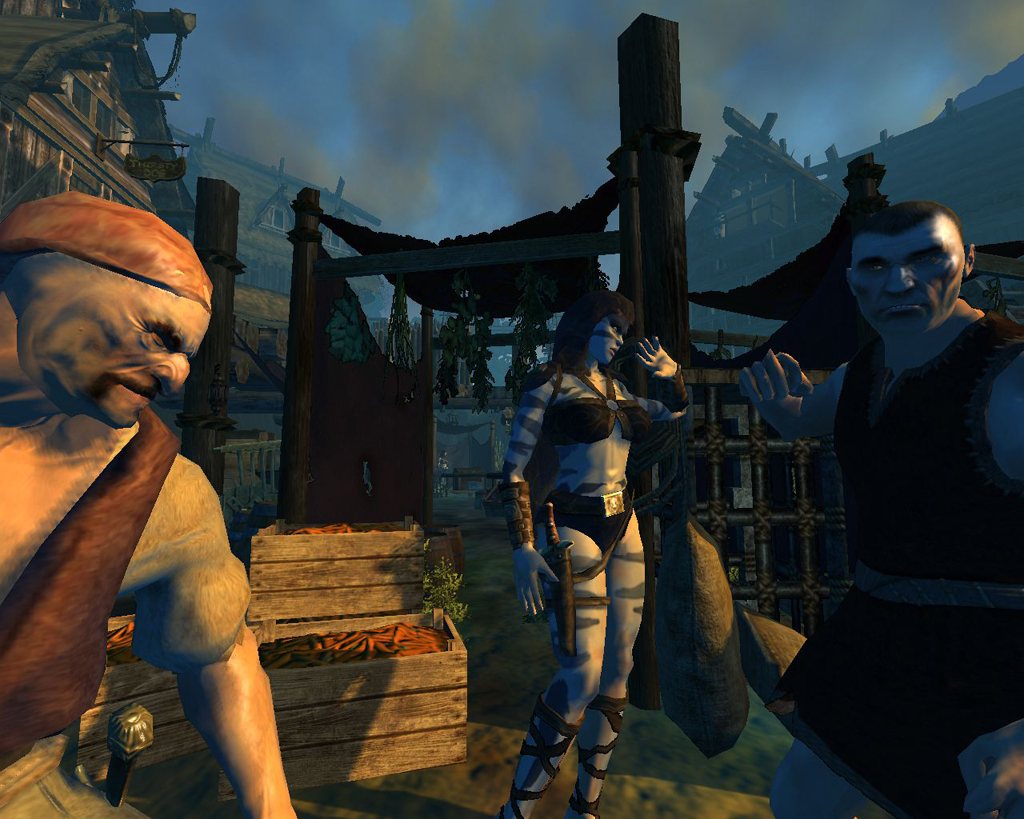
GameSpot: Tell us about why the team chose to make a game based on Robert E. Howard's Conan and why the particular time period in the novels' series (with Conan sitting on a throne as a king) was chosen for the game.
Gaute Godager: We chose to make an online action role-playing game based on Howard's Conan universe, Hyboria, mostly because we are Conan fans, I guess. Having a deep, full world to play with is a very fulfilling assignment.
Not all types of games lend themselves to all types of licenses, naturally. The RPG genre works best with licenses where the focus of the creators has been on the universe as much as on the characters. This is very true for the works done in the Conan universe. Some people with a more casual knowledge of the Conan brand would think the universe is the strong, violent, and silent barbarian from Cimmeria [and] that it is the character that defines the world. In some ways this is true, but I would like to differentiate it somewhat. Conan is the antithesis of the dark, sinful, and cruel world he travels through. Granted, he is a man of his age, but he is still different. Statements Conan would be fond of using, such as "I am not civilized enough to lie" and their like, say as much about his world as they do about him. This world is on the brink of a cataclysmic destruction. This world without morale or conscience... This seething, bubbling, and violent universe is simply a truly unique creation that has captured fans' imaginations for 70 years and has spawned a plethora of books, comics, and movies.
When examining Conan's life span, as Howard told it, the need to have Conan himself present for every player was paramount to us. Creatively, using the time after the novel The Hour of the Dragon was by far the best setting. Conan is king. He has been weakened, and we know his vassals are not 100 percent behind him. It is a time where all players can relate to him without actually having to play him, as we have seen in previous titles. Besides, to us, Conan is a somewhat reluctant king, which makes him a very interesting figurehead in a realm where players are to make it on their own.
GS: Could you explain how the single-player portion of the game will work? This part of the game sounds like much more than a tutorial level or two. How in-depth will the introductory single-player game for Age of Conan be? Is the idea to offer a full-fledged single-player game for those who may not want to go online?
GG: First of all, you will need to be online at all times, as we want you to log on to our servers to avoid exploits and cheats. So even though you are alone, you are still online.
I would like to point out that this is far from a simple tutorial. In fact, learning the ropes of the game is only a minor part of what you do in this period. I do not know with 100 percent certainty the amount of time that you will spend solving the challenges set before you in the single-player part of the game, but our goal is clear: We want to create a full-fledged stand-alone game that gives you a story-driven role-playing experience where the focus is on you, your character, and your journey.
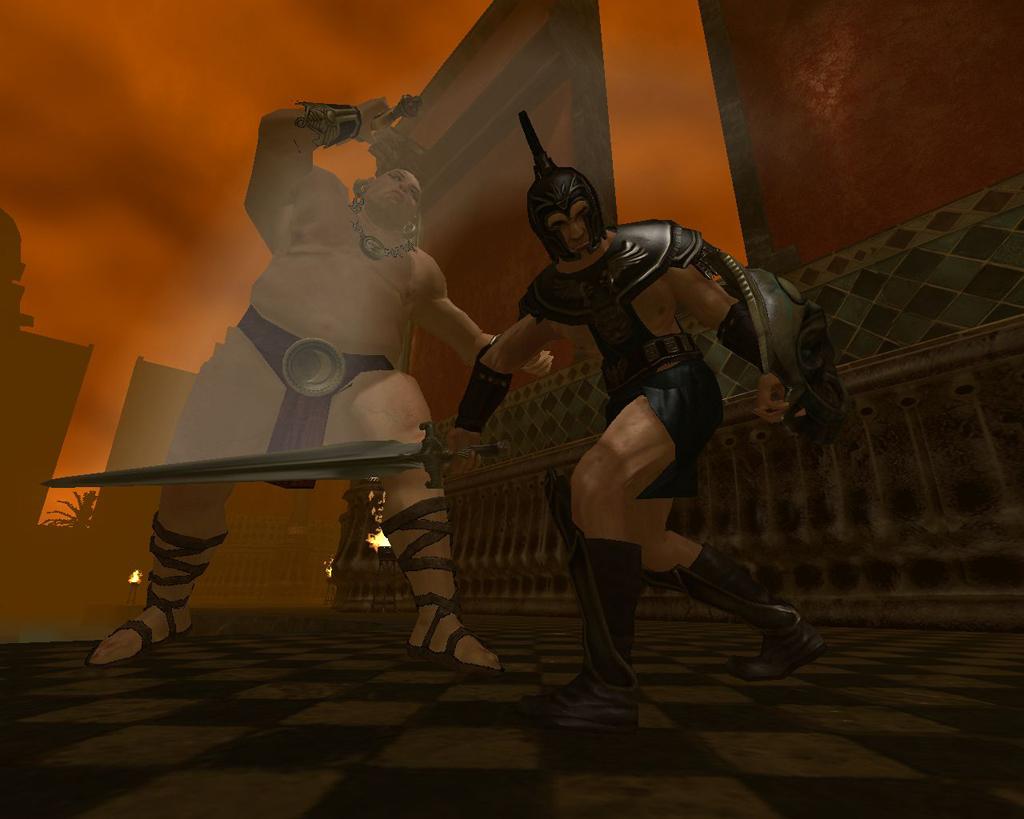
You start out your life as a slave. Your character is picked among the many rowing slaves on a ship. You suffer from a lack of recollection and there is a mysterious tattoo branded on your chest. During a massive storm, your chains burst free due to a pursuing galley that rams through the side of your ship. After fighting your way free and crushing the fat, bloated slaver, you dive into the sea, finally ending up on a beach in front of a lush, dark jungle with a seething volcano in the distance. The goal of regaining your memory becomes your immediate concern.
The setting of the Baracha Isles is the canvas for the first part of the game. You are completely alone in the beginning, but gradually you meet others, perhaps in a tavern or other places where being social is important. The game remains single-player, though, with four different story arcs tied together--one for each archetype class. This gives you replay value if you care to create more than one character. It hasn't been decided if we shall let you skip the single-player game altogether after you've gone through it once. What has been decided is that although you play on our servers, you will play the single-player game as if it was offline, without any additional costs other than when you bought the game.
Crush Your Enemies
GS: Tell us about the different playable races that will appear in the game. Will the primary differences between them be cosmetic, or will they have different abilities, different starting locations, or different alliances with different political factions? 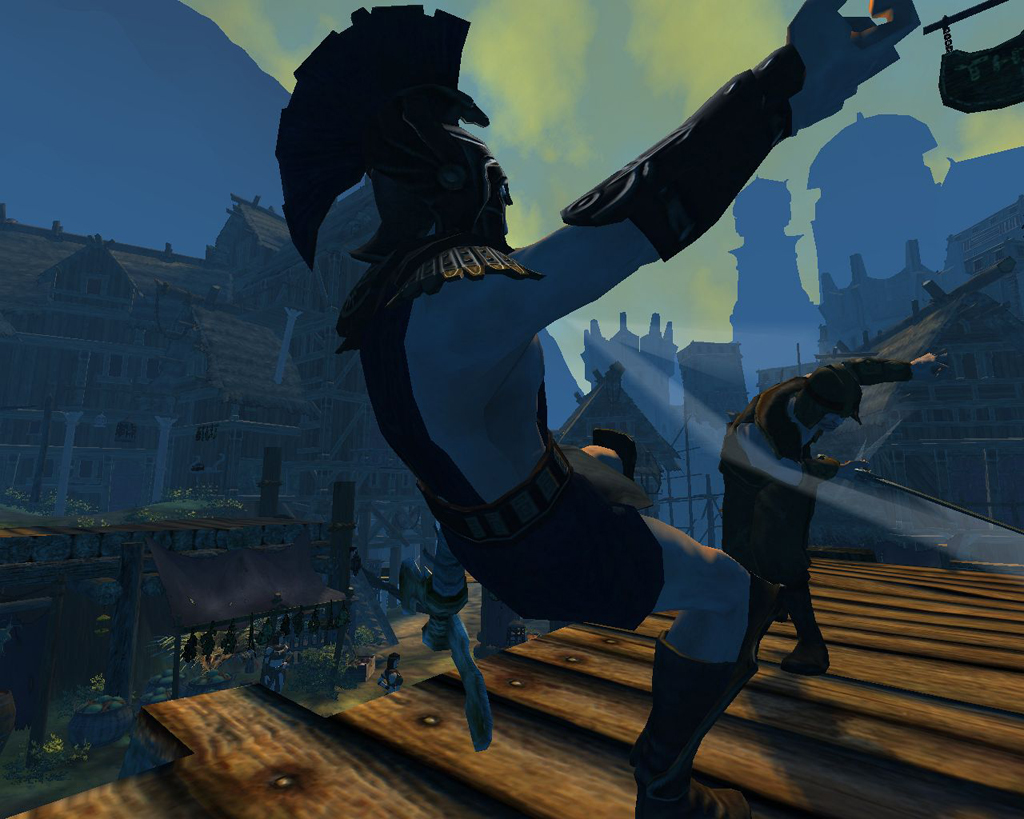
GG: In Hyborian Adventures, which is the first in several titles planned on the Age of Conan brand, the playable races are Aquilonian, Cimmerian, and Stygian. Over time, this will be increased. They will have different looks and hometowns, but the choice of classes will also be different for the various races. For instance, only the Stygians will have access to the mage class and its branching specializations.
The priest classes also behave differently, as they are aligned to different gods. Shamans from Cimmeria (the cold, northern reaches; the homeland of Conan himself) are granted their power from Crom, while the high priests of Aquilonia (the gentle Roman-like area where Conan now rules) receive their powers from Mitra. Finally, the snake priests of Stygia (the southern, Egyptian-like area that is home to many vile enemies of Conan) obey the snake god, Set.
Although all players are united by beginning at the Baracha Isles, after level 20, when they leave the single-player experience, they go back to their own country to set out on their multiplayer adventures. Cimmerians will go to Broken Leg Glen, Aquilonians to Tarantia, and Stygians to Khemi.
There is a lot of lore that I need to explain in order to describe the game, but for those interested in learning more, there are a lot of good sites on the Internet. So read up on these dark locations, their cruel peoples, and sinister gods.
GS: What can you tell us about the game's professions, which will apparently begin with base classes of the warrior, wizard, priest, and rogue and will branch from there? How will new players be introduced to the game's professions, and what roles will the classes play once players have completed the single-player game and get ready to go online?
GG: The archetype classes are warrior, mage, priest, and rogue. You get to choose a class at level five, as you arrive at Tortage, the freebooter town on the Baracha Isles. You begin your life without a class, and all you need to choose is your looks and race. At level 20, you get to choose between three or four branching classes, and this becomes your main class. You keep your main class all the way to level 60, when you chose your specialization. There are two specializations for your base class. In total, there are around 40 different class choices available for the player.
Add to this the guild classes that you choose at level 40. There are four different guild classes accessible to you, regardless of what your main class is. The guild classes are like an overlay class, with mostly social functions. Among these are a path of manufacture specialty (although everyone can do some item creation), tactical expertise (increasing the size of teams, accessing advanced formations), strategic expertise (creating and using siege engines, creating main halls in the guild village), and lordship (getting a permanent follower with unique artificial intelligence).
GS: Tell us about the game's real-time combat system. Why was the decision made to let players manually control combat, and what will it add to the game?
GG: When thinking about what Hyboria and being a character like Conan is all about, picking up a sword and crushing something seems very natural. The ritualized indirect, or downright slow, combat found in many role-playing games simply didn't lend itself as well to something as violent, brutal, and direct as a game in the Hyborian age.
We call the engine Real Combat, and it is based on six directions, or ways, of attacking an opponent with a sword. First, you can hack down against the head. Second, you can slash diagonally down from the right, while the third is slashing the same way from the left. Fourth, you can thrust against the torso. Fifth, you can slash diagonally up from the left, and sixth, you can slash diagonally up from the right. The point here is that these directions lend themselves naturally to being strung together in combinations. These combos unlock additional damage and faster combat, if done well.
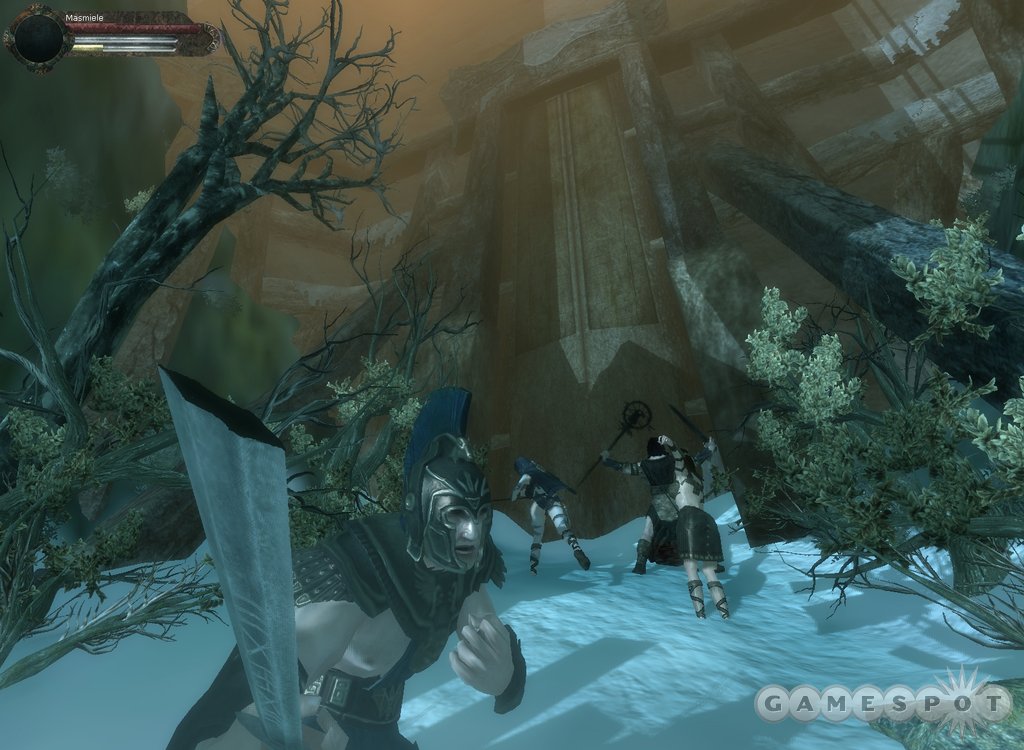
We hope it will add a lot of action to the game. The need to understand the opponent, including his or her weaknesses and strengths, and then exploiting them should be paramount in the game. This hands-on direct combat system also plays well with a tactical system of formations and teams, as well as in larger siege combat.
One analogy I like to use in terms of the Real Combat engine is the "dance of death." You should move with swiftness and grace, just like Conan did, while brutally dealing death all around you.
Hear Their Lamentations
GS: Tell us about the game's larger battles. We understand that players will not only be able to group with one another, but they'll also be able to recruit armies of computer-controlled soldiers. How will these engagements work? Will they come to resemble the battles from real-time strategy games? Will hired companies be persistent throughout a character's lifetime? 
GG: The larger battles come in two major forms: player-versus-player battles against other guilds in the border kingdoms and battles against monsters that build their own villages in your resource and building regions.
You can add non-player characters to your group, but only by cooperating with other players will you reach proportions that can be deemed an "army." The focus is on cooperation between the members of a guild. The NPCs are temporary, excluding the followers mentioned previously. Let me give you an example of a type of large-scale battle that can be encountered.
"Pete" is the leader of his guild. He travels to a forested area in the southern part of Cimmeria called Murrogh Forest. This is a resource and building region, meaning it has six to seven different locations where players or monsters can build their villages or strongholds. Pete scouts the area, noticing that there are few other players present: only monsters and their villages.
Drumming up support from his guild, he finds a likely location for a stronghold. It is populated by bandits from Atzel's Fortress, but Pete wants this location. He sees that the bandits have built a wooden palisade around a skimpy stronghold with four to five buildings inside. Among the outlying buildings, Pete notices the bandit's barracks and the iron refinery, where slaves gather iron-speckled rocks for smelting. The bandits are busy constructing several buildings in the area, and more buildings sprout up like mushrooms on the lush fields. Luckily, they don't spot Pete as he sneaks around the outskirts of the camp.
When the rest of his guild arrives (around 30 people), they instantly start to construct siege engines they can use in the forthcoming battle. Commanders (those with tactical guild professions) create special cavalry formations, but only with mounted knights and their followers. After a few minutes of siege-engine construction, the players are spotted by a bandit scout. The scout escapes, and soon afterwards, the skirmishes begin, with the bandits trying to harass the catapult builders. These skirmishes are easily dealt with by the cavalry. The cavalry formations cannot be disrupted by lone monsters, nor can minor monster formations break the massive cavalry formations thundering down on them. So the cavalry are used to protect the siege engines.
Unfortunately for Pete and his guild, they notice the bandits have shifted into high gear and are pumping out makeshift towers along the village palisade, in addition to their own catapults, which are resting comfortably outside firing range and are waiting for the players to approach. Pete orders his catapults to fire at point in the city walls. The rest of the guild organizes into foot soldier formations, with lots of mercenaries and archers. Formations are the building blocks of combat and work in a rock-scissors-paper-like manner, where orientation and type defines how the formations interact with one another.
Pete and his guild smash down a wide section of the wall with their catapults, revealing a group of bandits organized in pikemen formation. They stand there, dug in, waiting for the players to charge. But the charge never comes. Pete and his guild are wary of the battle towers, so they set forth to hammer them down. Finally, when they have defeated the defenses, the valiant players form an archer formation and fire huge volleys of arrows, routing the pikemen. This is when the cavalry charges through the breach, thundering all over the fleeing pikemen, flinging them through the air left and right as they are run over.
Although the bandits rally when a small cavalry of mammoth-riding bandits comes to their aid, the battle is virtually over. The last defense demon summoned by the bandit boss is of little consequence when all his other forces are dead. The enemy keep is set afire, and the strategists of the guild can finally start building the guild keep. A new player village has sprung up.
Naturally, this fight will seem completely different when Atzel's Fortress sends its own army to avenge the bandits and the players are forced to defend their fledgling village against a tide of mongrels. And it's even more exciting when you try to win a PvP village. Although the AI in Conan focuses on natural behavior, nothing beats fighting a real player.
GS: Tell us about the game's magic system, which we understand will not rely on sparkling particle effects but will instead focus on the darker sorceries featured in Howard's novels. What kind of magic will players wield? Will magic be used for the kind of traditional roles we've seen in online games (healing, protection, controlling crowds of monsters)?
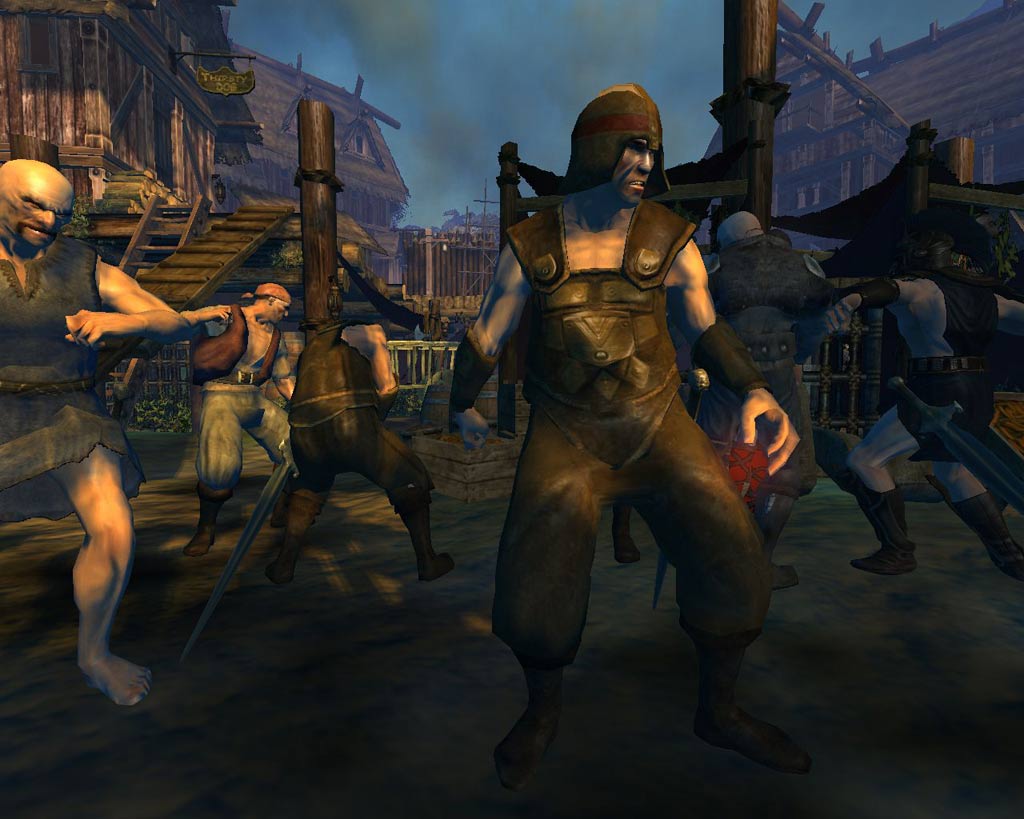
GG: It is true that we try to make the visual look and feel of magic in Conan different from what you have seen in other games and the more traditional fantasy settings. The clownlike, fireball-tossing magic users in pointy hats, with puffs and multicolored robes, are not part of the Hyborian universe. In Conan's age, magic is dangerous, hidden, and dark. Men who meddle with magic inevitably fall to its temptation and powers. Magic uses you as much as you use it. Naturally, the ultimate power comes when you are able to walk the fine line--the one between destruction and creation.
To make this work, we have tried to make magic more "real," in a sense. Manipulation of the natural forces of the world, the summoning of "real" demons from a dark, untold hell, and touch-based shamanistic powers are major parts of our magic system. Yes, there will be magic in many forms, but you should feel the difference when playing this game. You should feel the age of darkness, the weight of history, and the fear of being corrupted when you walk the path of arcane magic.
GS: Thanks, Gaute.
Got a news tip or want to contact us directly? Email news@gamespot.com
Join the conversation